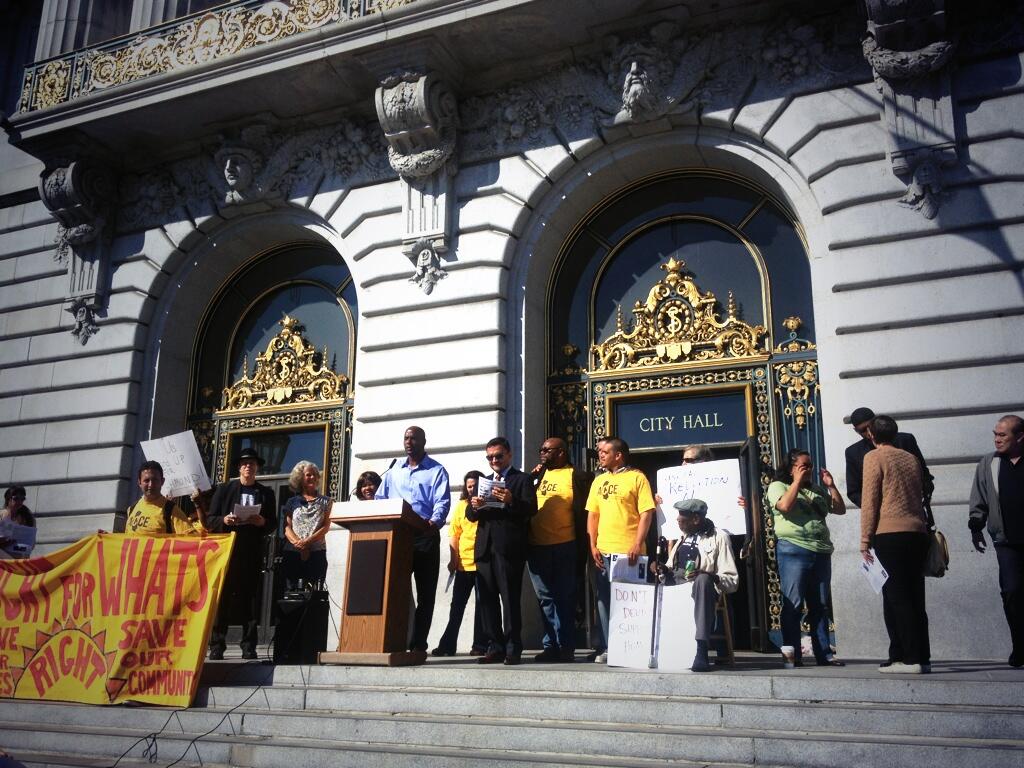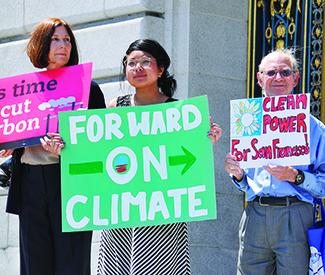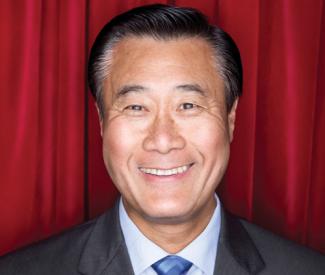By Amy Yannello
Note: This article has been corrected from an earlier version.
As she had done countless times before, Gloria Davidson sat and waited for her son to be brought into the courtroom. His hands and feet were shackled, and his blue uniform branded him as different — someone to be judged apart from the rest of the crowd in this room.
His crime? Aaron Davidson has schizophrenia.
On that day earlier this year, which Gloria recounted and shared with the Guardian in a recent interview, he faced charges for violating one of five restraining orders against him — but he didn’t understand what he’d done to deserve them, his mother said.
“The neurons and synapses in his brain fire inappropriately and he sees and hears things that are not really there,” Gloria explained. “As a result, his responses to his perceived reality are often unwarranted or make no sense,” she continued, “or frighten the people around him.” Aaron could neither speak coherently nor acknowledge that his actions had led to restraining orders, she said.
In his case, the judge deemed Aaron “incompetent to stand trial” and sent him to Napa State Hospital for treatment. He remains there, where he’ll turn 36 later this month.
Davidson is one of three Bay Area mothers with adult sons at NSH to push for full, statewide implementation of Laura’s Law.
Known formally as “assisted outpatient treatment” (AOT), the law is named for Laura Wilcox, a 19-year-old college student who lost her life when Scott Harlan Thorpe, a man with a persistent and severe mental illness who had stopped taking his medication, shot and killed her and a coworker at a Nevada City mental health clinic.
While Thorpe, then 41, was in too deep of a state of psychosis to benefit from AOT at the time of the shootings, his family, psychiatrist, and the Wilcoxes all believed that if the legislation had been in effect even six months earlier, when Thorpe’s family first noticed he’d stopped taking medication, the tragedy could have been averted.
DEBATE ON INVOLUNTARY TREATMENT
Through AOT, an individual’s family, doctor, or trusted third party may advocate to a judge that a patient is at risk of decompensation — serious psychological deterioration making it impossible to function independently — if left untreated. In very narrow circumstances, a judge may order a person to receive AOT as a condition of being allowed to continue living independently.
Currently, only Nevada, Los Angeles and Yolo counties have embraced the law, which allows courts in very limited circumstances to compel into treatment those residents who are too ill to know they are ill.
This “lack of insight” — a neurological condition known as “anosognosia” — is said to affect upward of 40 percent of people with serious mental illnesses.
Gloria Davidson and Teresa Pasquini, another mother of a mentally ill NSH patient, are now pushing for Laura’s Law implementation in Contra Costa County. They’re joined by a third mother, Candy DeWitt, who founded a project called Voices of Mothers Project to bring together parents of people suffering from anosognosia. Alameda County’s Behavioral Health Care Services has issued a report recommending to its Board of Supervisors that it approve a one-year AOT pilot project. The issue is expected to be taken up at the BOS’ Oct. 28 meeting, where it would need a majority vote to be approved, DeWitt said.
Laura’s Law isn’t without its detractors. “Where does it end?” asked Dan Brzovic, an attorney based in the Oakland office of Disability Rights California. “Pretty soon, we’ll have people saying that anyone with a mental illness cannot think for themselves.”
“The moral issue is that people who are competent to make choices for themselves must be given that right,” he continued. “That’s if they have the capacity. If they don’t, then there are involuntary treatment options already on the books, like conservatorship.”
But the debate surrounding Laura’s Law and mental health service delivery goes deeper, since underlying questions remain about whether dedicated funding has translated to sufficient levels of care. Each of the three mothers told the Guardian that their sons — all deemed to be suffering from “serious mental illness” — never received adequate treatment as they moved through California’s fragmented and broken public mental health system, despite the advent of Proposition 63, the 2004 ballot initiative that created California’s Mental Health Services Act.
A staggering report released in mid-August by State Auditor Elaine Howle brings this claim into focus. According to the audit, the California Department of Mental Health and the Oversight and Accountability Commission have exercised such “minimal oversight” since MHSA went into effect that the state has “little assurance” that $7.4 billion has been used “effectively and appropriately.” That amount represents the total funding generated by the MHSA — which imposes a 1 percent tax on personal income in excess of $1 million — from 2006 to 2012.
In response to these revelations, Rose King, a co-author of Prop. 63 who previously served as a consultant for then-Attorney General Bill Lockyer, stated, “No county has been required to demonstrate its accountability for any spending or program choices. The public — and state officials — have no idea whether counties have improved county mental health systems, whether spending complies with the law, and whether private contractors have delivered promised services.”
“WASTE, FRAUD, MISMANAGEMENT”
The MHSA ramped up services for some 600,000 adults and children in the public mental health system, bringing in $1 billion per year in dedicated funding for the treatment of serious mental illness.
But beyond patients tracked via Medi-Cal, no one tracks the true number of uninsured patients served. There isn’t a data system capturing all the clients or services tied to MHSA funds, making outcomes impossible to track with accuracy.
Some funding has gone to client advocacy groups who actively oppose Laura’s Law. Disability Rights California and the California Network of Mental Health Clients, both opponents of AOT, received $3 million and $1.5 million in MHSA grants respectively. These groups believe voluntary services should be the only programs to receive funding through MHSA and have actively threatened to sue counties that have tried to implement Laura’s Law.
Some of the very people who campaigned hardest for MHSA have since become watchdogs monitoring its implementation. They include King, who lost both a husband and son to suicide due to lack of treatment for their severe mental illnesses, and Pasquini — whose only son is languishing in NSH with a diagnosis of schizophrenia and a felony charge for an alleged assault on a fellow patient while on the incorrect medication.
These embattled mothers say they’ve observed a system awash in “waste, fraud and mismanagement.” They also charge that the system results in disproportionate services for what King terms the “worried well” — people merely experiencing life’s ups and downs — in many cases to the neglect of those struggling with what’s classified as “serious mental illness.”
MISSPENDING OF FUNDS DESIGNATED FOR PREVENTION?
Under the MHSA, only a specified population may receive treatment using these funds. Patients must have been diagnosed with “serious mental illness,” amounting to psychological problems that are severe enough to prevent an individual from functioning independently without assistance should they go untreated.
But critics like King and DJ Jaffe of the Mental Illness Policy Org. (MIPO), a national think tank that has been critical of California’s management of MHSA monies, contend that the 20 percent of MHSA funds designated for Prevention and Early Intervention (PEI) programs are instead being funneled into programs with little connection to mental illness treatment.
The MHSA specifically limits PEI dollars to programs that “prevent mental illnesses from becoming severe or disabling” or that “limit the duration of untreated mental illness.”
Yet King contends that these funds have been used instead to underwrite social service programs ranging from domestic violence prevention and parenting classes, to social skills for disadvantaged youth — all good causes that are nevertheless “not legitimate recipients” of money intended for mental illness treatment, King says.
CONFLICT-OF-INTEREST ALLEGATIONS
Jaffe’s organization has seized on the PEI expenditures as a violation of the MHSA, turning a skeptical eye on the 16-member Mental Health Services Oversight and Accountability Commission.
In 2011, according to a MIPO analysis, more than $23 million in PEI grants went to advocacy organizations and service providers with direct financial ties to both OAC commissioners and committee members. MIPO characterized it as “insider dealing” and a violation of California conflict-of-interest laws.
OAC committee member Rusty Selix, a lobbyist and Prop. 63 co-author, dismissed the MIPO report, saying, “I don’t see any conflict.”
Selix added that unpaid OAC board members recuse themselves from voting whenever it’s deemed to be necessary. And he defended a system where stakeholders, such as consumers and family members, also serve on committees, saying, “You can’t expect to include them in the process without crisscrossing some stakeholders who also receive MHSA grants.”
Jaffe took a different tack. “The problem, besides the blatant conflict-of-interest,” countered Jaffe, “is how these PEI monies are being spent. And they’re not being spent to help the seriously mentally ill,” he continued. “Yet year after year, they’re getting approved. Millions and millions of taxpayer dollars that were supposed to go to treat the sickest among us are being spent on social programs.”
NOT ENOUGH BEDS
Some believe the broad issue of funds not making it to the intended target population might be playing out within the microcosm of San Francisco. In 2010-11, the most recent available data, San Francisco County received $23 million in MHSA funding, 75 percent of which was earmarked for direct services.
But that money hasn’t gone toward ensuring that there are enough beds for treating mentally ill patients, according to Geoff Wilson, president of the Physicians’ Organizing Committee. Wilson’s organization reported that as of August, San Francisco General Hospital had dropped to 19 emergency psychiatric beds, down from 88 two years ago.
“It’s unconscionable. We’ve got the highest 5150 rate in the state,” Wilson told The Guardian, referring to 72-hour psychiatric holds imposed by law enforcement. We’re not saying ‘lock everyone up,’ we’re just saying that for people who need it, the beds need to be there, and there’s barely any left in the city.”
Wilson explained the cuts by saying that when Medi-Cal stopped paying for the care — essentially “raising the bar” for what it took to keep someone in a psychiatric inpatient bed — the county slashed the number of beds because it “simply wasn’t profitable” to keep them open.
Asked to respond to this claim, SFDPH spokesperson Eileen Shields told the Guardian that only Barbara Garcia, the agency director, was in a position to respond. But Garcia was out of town and unavailable for comment.
According to the POC’s Dr. Cameron Quanbeck, it costs $250 per day to house inmates in jail, compared with $1,700 per day for hospital care. In March, Sheriff Ross Mirkarimi testified before the Mental Health Board that the jail system had become the “default” place for people with mental illness, identifying more than 70,000 contacts with Jail Psychiatric Services in 2012 alone.
LAW ENFORCEMENT AND LAURA’S LAW
According to the U.S. Department of Justice, 16 percent of inmates have a severe mental illness, making jails and prisons the largest de facto psychiatric treatment facilities. The National Sheriff’s Association has come out in support of AOT laws in all 50 states.
Pasquini says her son could have benefited from AOT, and she believes that “AOT should be a mandated MHSA program in every county to prevent tragedy and intervene with the criminalization of mental illness.”
Since his initial diagnosis of schizo-affective disorder at 16, Pasquini’s 31-year-old son has had more than 70 emergency contacts with law enforcement and/or ambulance personnel, most of them resulting in 5150 holds.
He is now a patient at NSH, where “he wants to die every day, and I don’t blame him,” continued Pasquini. “It’s a reality for him. His illness has progressed, because every time you have a ‘break,’ you get a little worse. He’s the perfect candidate for Laura’s Law.”












